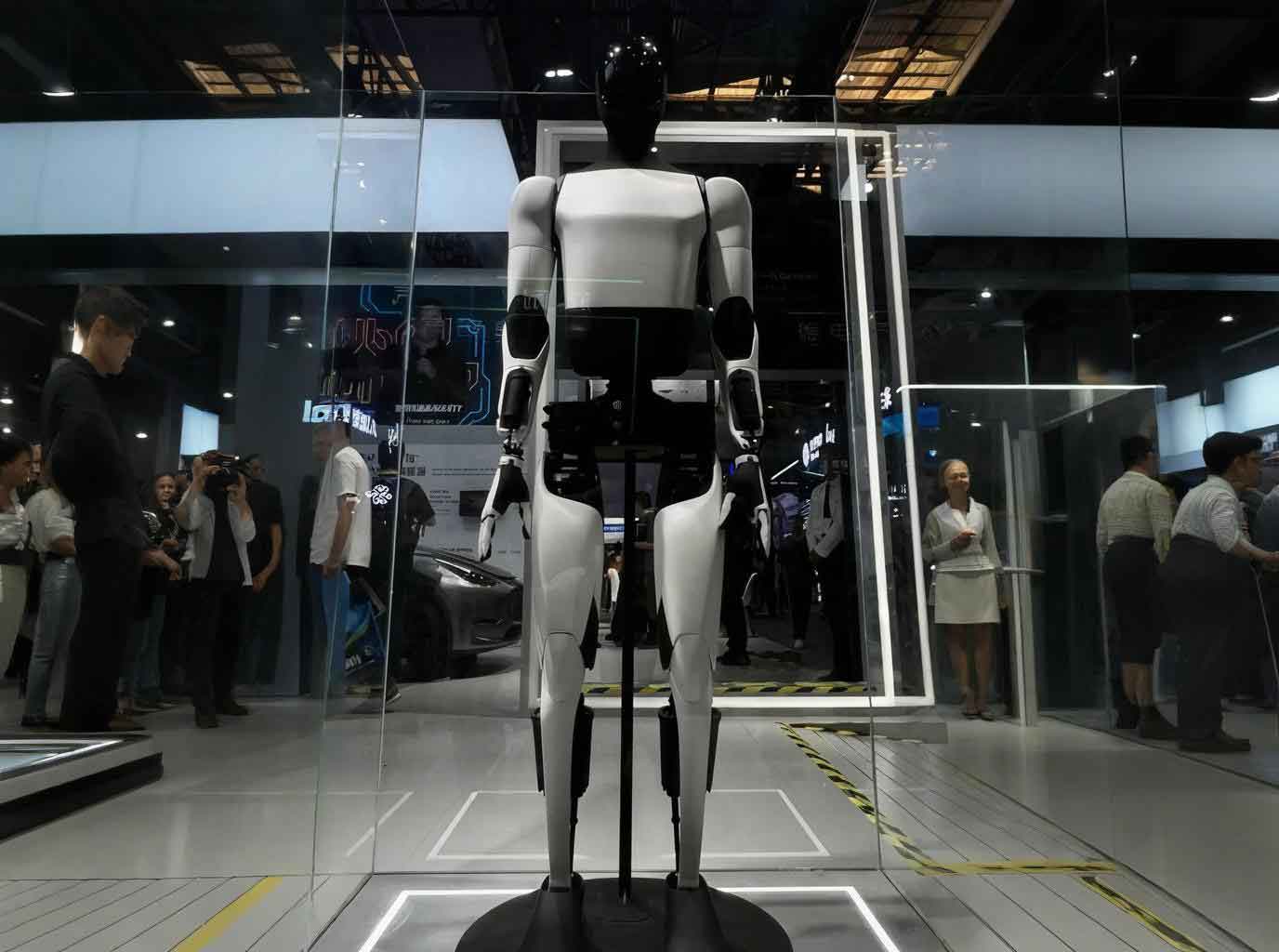WUXI, Jiangsu, April 29, 2025 – On basketball courts, 1.8-meter-tall humanoid embodied robots named “Iron Dun” crouch to grab balls and execute precise shots with accuracy rivaling professional athletes. Inside octagonal arenas, combat embodied robots dodge and strike with rhythmic thuds echoing through the venue. These scenes unfolded at China’s inaugural Embodied Intelligent Robot Sports Meet in Wuxi, where over 150 robotic competitors demonstrated capabilities across running, combat, football, and other athletic disciplines.

Organized by the China Electronics Society, the event spotlighted significant advancements in embodied robot technology. Xu Xiaolan, President of the China Electronics Society, emphasized the strategic importance: “Embodied intelligence represents AI systems with physical forms – the critical gateway for artificial intelligence to enter the real physical world. Humanoid robots, as the optimal embodiment of this fusion between AI and robotics, possess tremendous potential for industrial and consumer applications.”
-
Competition: Capable of Movement and Thought
During “2V2” football matches, 1.2-meter-tall embodied robots executed complex maneuvers including positioning, dribbling, passing, and defending. A decisive goal by the red team triggered enthusiastic applause from spectators. “These embodied robots autonomously identify footballs through AI vision systems and perform intelligent positioning during gameplay,” explained Xu Lei, Marketing Director of Beijing Accelerate Evolution Technology Co.
Nearby, the “Walker II” embodied robot weighing approximately 29 kilograms jogged while swinging its white boxing gloves, drawing crowds. Beyond combat applications, this embodied robot platform serves educational research and customer service scenarios. Competitions specifically tested environmental perception and autonomous decision-making capabilities. In cross-country running events, embodied robots independently navigated complex terrains including grasslands, water pits, and slopes. Additional demonstrations featured chess-playing embodied robots, elderly-care assistants, and underwater exploration units.
-
Pre-job Training: Preparing for Factory Work
Industrial embodied robots weighing approximately 76 kilograms demonstrated material handling in exhibition zones, gently lifting 16-kilogram objects through coordinated teamwork. Representatives from Shenzhen Ubtech Technology revealed these embodied robots already participate in automotive manufacturing processes like assembly quality inspections. “We’ve established embodied robot data collection and training platforms to accumulate operational data and verify precision movements before their official deployment in factories,” stated Guo Dahong, Deputy General Manager of Humanoid Robotics at Tianqi Automation Engineering Co.
Guo acknowledged current industrial implementation challenges: “Embodied robots require breakthroughs in operational precision and load capacity. Industrial applications still lack accumulated process standards and data, while AI ecosystem maturity remains insufficient.” He predicted initial deployment would occur in confined, simple-process scenarios before expanding to complex environments.
-
Technological Breakthrough: Smoother Movements
Joint technology breakthroughs enable more natural movements. Gong Zhihao, Industry Manager at Wuxi Cancer Intelligent Drive Technology, showcased the “Little Crab” embodied robot capable of calligraphy writing and equipment inspection. Sun Zeju, CEO of Jiangsu E-U Robot Technology, emphasized core innovations: “We specialize in joint algorithms and develop proprietary joints specifically for embodied robots. Advancements in materials, algorithms, and architecture will enable increasingly fluid motions.”
Academic leaders highlighted future trajectories. Ding Han, Academician of the Chinese Academy of Sciences, noted: “The rapid development of embodied robots stems from breakthroughs in information technology and artificial intelligence. Future integration will grant robots unprecedented features and functionalities.” Zhang Jianwei, Foreign Academician of the Chinese Academy of Engineering, projected expansive applications: “Embodied intelligence represents the crucial pathway for addressing real-world challenges. These systems hold vast potential across manufacturing, agriculture, transportation, and domestic services.”
Government representatives outlined policy frameworks. Du Guangda, Deputy Director of the Ministry of Industry and Information Technology’s Science and Technology Department, defined humanoid robots as “premier carriers for AI-enabled industrialization,” pledging to accelerate technological breakthroughs through intelligent driving, scenario expansion, and ecosystem optimization. Wuxi Party Secretary Du Xiaogang committed to developing embodied robots into a 30-billion-yuan future industrial cluster within three years.
Zhu Aixun, Director of Jiangsu’s Department of Industry and Information Technology, recognized the sector’s economic significance: “The embodied robot industry epitomizes new quality productive forces with robust growth momentum.” As the games concluded, one reality became undeniable: Embodied robots are accelerating their entry into human domains with increasingly sophisticated physical intelligence.